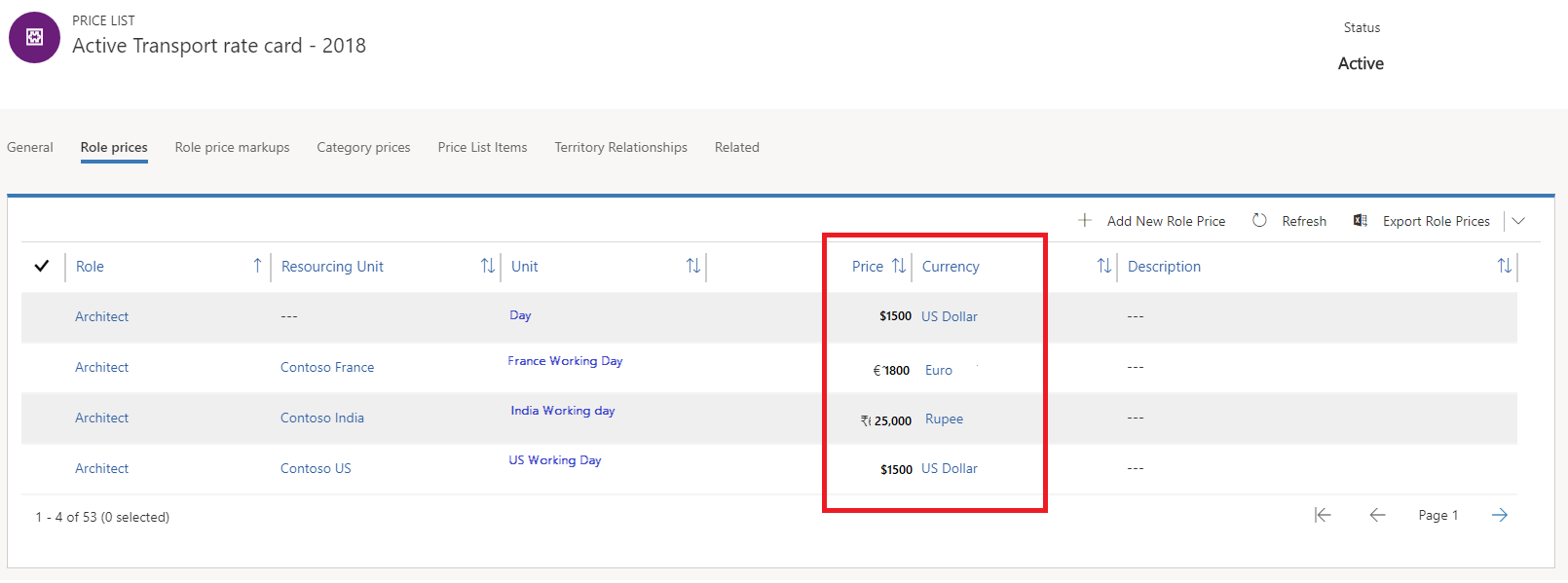Resourcing unit currency on role price lines for cost
Important
This content is archived and is not being updated. For the latest documentation, see Microsoft Dynamics 365 product documentation. For the latest release plans, see Dynamics 365 and Microsoft Power Platform release plans.
Note
These release notes describe functionality that may not have been released yet. To see when this functionality is planned to release, please review Summary of what’s new. Delivery timelines and projected functionality may change or may not ship (see Microsoft policy). For detailed information about our products, visit the Customer Engagement documentation.
Project Service allows only one currency per price list, which is specified on the price list header. The price list line for resource pricing has the same currency specified on the price list header. However, for globally operating project service companies that have centralized pricing across all of their divisions across countries, this can necessitate a data-intensive setup where they'll need to set up a price list for each distinct currency that they sell or incur costs in.
With this feature, Project Service will allow for a line-level currency for resource prices that differs from the price list header currency. Currency on the price list header will be used as a default on the resource price lines. This way, large global firms that would like more centralized pricing setup may work with one global price list that specifies resource prices in many currencies. This could also enable scenarios where prices managed by each resourcing unit come together as one master price list.
Using a single currency per price list will still function, which benefits companies that allow for more decentralized pricing and that track exchange prices for resources. This can be customized so that the resource prices on a price list follow the currency of the price list header.
